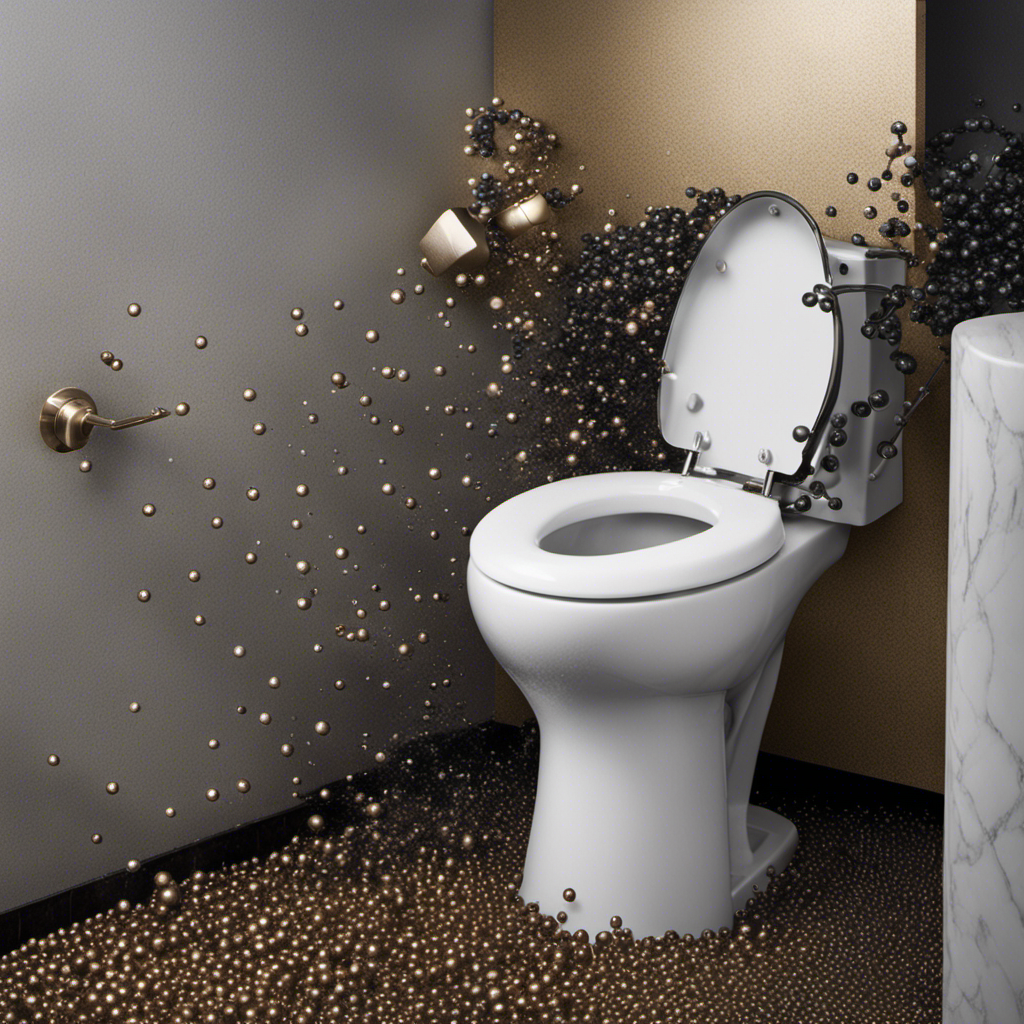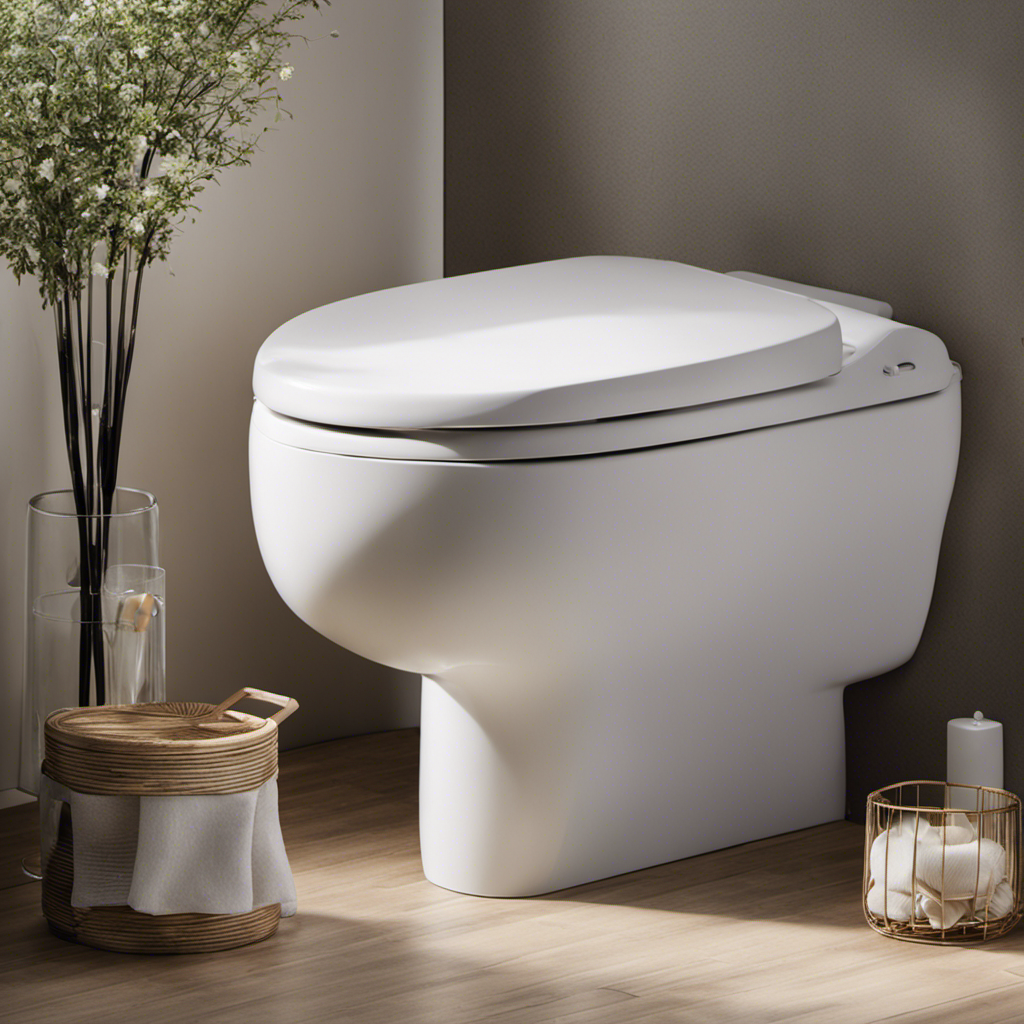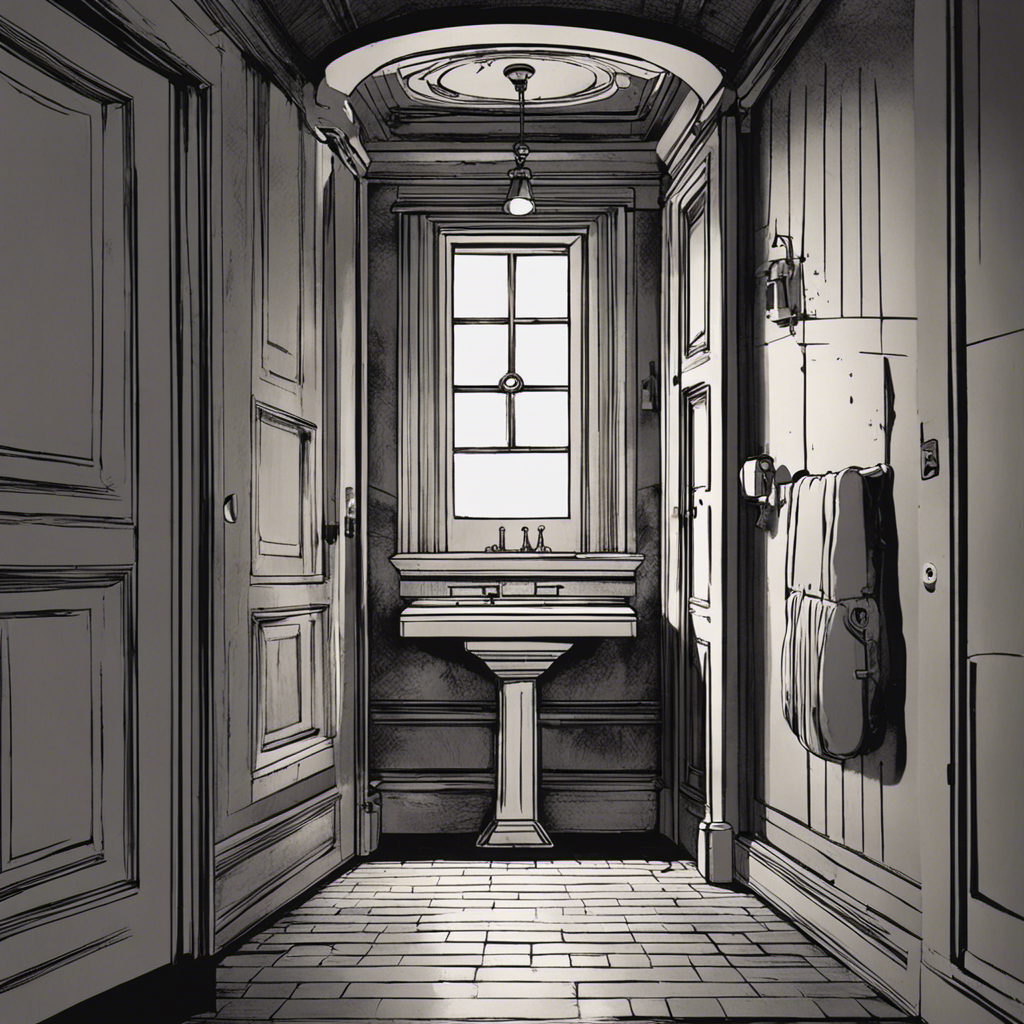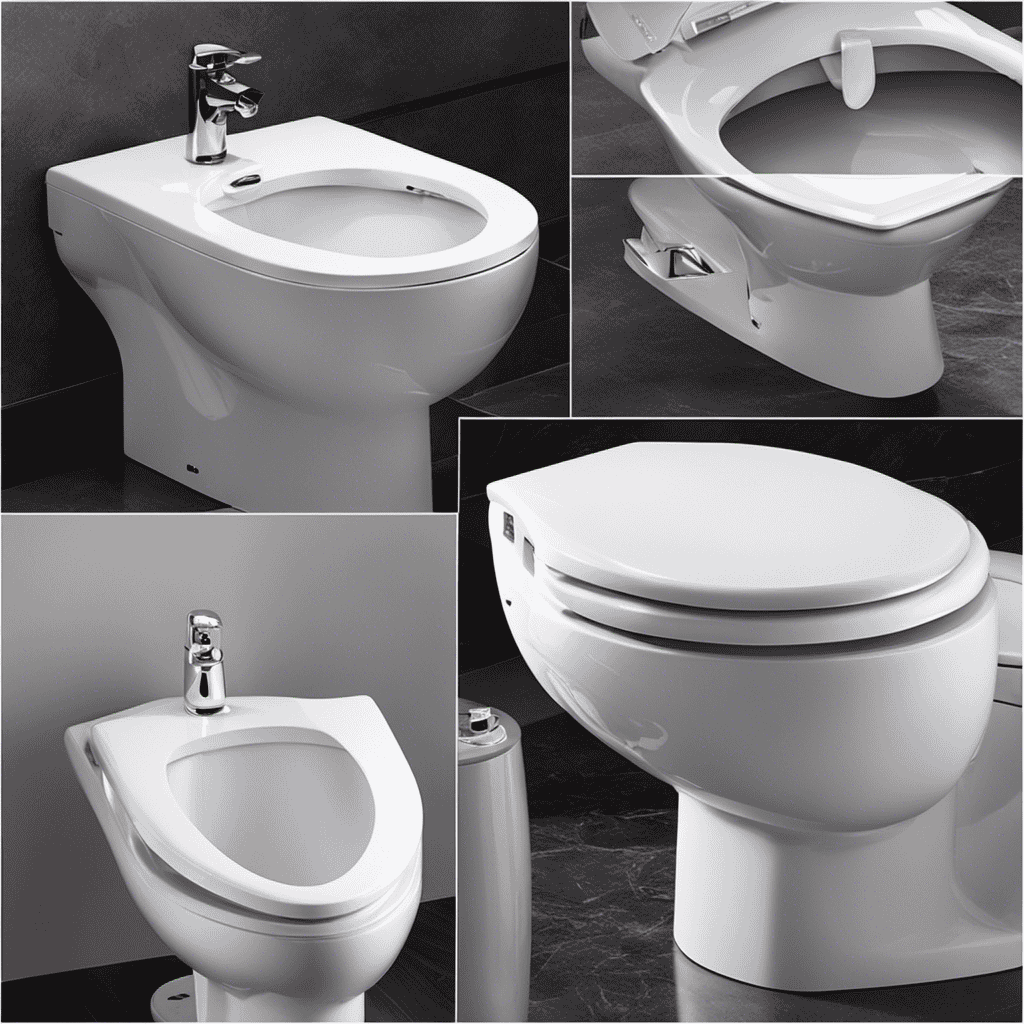Have you ever wondered why your toilet refuses to flush? Well, I’ve got the answers you’ve been searching for.
In this article, I’ll delve into the possible reasons for a non-flushing toilet and provide you with common problems and practical solutions.
Get ready to become a plumbing expert as we troubleshoot and understand the mechanics of a flushing toilet.
Let’s dive in and discover the steps to fix a toilet that won’t flush.
Key Takeaways
- Possible reasons for a non-flushing toilet include toilet clogs, low water level in the tank, worn out or damaged flush valve, and insufficient water in the tank.
- Common toilet flush problems include clogged toilets, faulty flush valves, low water levels, weak flushes, and continuous running water.
- Troubleshooting tips for a non-functioning toilet include checking the water supply valve, inspecting the flapper valve and chain, clearing potential clogs, and considering professional repair services if needed.
- Understanding the mechanics of a flushing toilet, such as the flush valve, fill valve, and siphon jet, can aid in effective troubleshooting.
Possible Reasons for a Non-Flushing Toilet
There could be a few reasons why your toilet isn’t flushing.
One possible cause could be a toilet clog, which occurs when an object or excessive waste obstructs the flow of water through the pipes. This can happen due to flushing down items that are not meant to be disposed of in the toilet, such as sanitary products or excessive toilet paper.
Another reason could be a faulty flush handle. If the handle is not functioning properly, it may not be able to lift the flapper or release enough water into the toilet bowl to create the necessary suction for a proper flush. In such cases, it may be necessary to replace the handle or adjust its positioning to restore proper flushing functionality.
Common Toilet Flush Problems and Solutions
One common problem with toilets is when they don’t flush properly. It can be frustrating and inconvenient, but there are several common issues that can cause this problem. Here are three possible reasons for a non-flushing toilet and their solutions:
-
Clogged toilet: If the water in the bowl rises but doesn’t flush, it may be due to a clog. Use a plunger to create suction and dislodge the blockage. If the clog persists, a toilet auger or plumber’s snake can be used to remove it.
-
Faulty flush valve: The flush valve is responsible for releasing water from the tank into the bowl during a flush. If it is worn out or damaged, it may not work properly. Replace the flush valve to restore proper flushing.
-
Low water level: Insufficient water in the tank can result in a weak or incomplete flush. Check the water level and adjust the fill valve if necessary. Increasing the water level should improve flushing performance.
Troubleshooting Tips for a Non-Functioning Toilet
If your toilet isn’t functioning properly, you can try these troubleshooting tips to identify and fix the issue.
First, check for signs of a faulty toilet, such as a weak flush, clogs, or continuous running water. If you notice any of these problems, it’s time to take action.
Start by checking the water supply valve to ensure it’s fully open. Next, inspect the flapper valve and chain inside the tank to make sure they are properly connected and functioning. If these components are in good shape, try clearing any potential clogs using a plunger or a toilet auger.
If all else fails, it may be time to call for professional toilet repair services. Understanding the mechanics of a flushing toilet can help you troubleshoot and fix the issue more effectively.
Understanding the Mechanics of a Flushing Toilet
To better understand how a toilet flushes, it’s helpful to know the mechanics behind it. The toilet flush mechanism consists of several key components that work together to create a powerful flush. Here are three important aspects of the toilet flush mechanism:
-
Flush Valve: This is a rubber flapper or a tank ball that seals the bottom of the tank and prevents water from flowing into the bowl. When the flush lever is pushed, it lifts the flush valve, allowing water to rush into the bowl and create the flushing action.
-
Fill Valve: The fill valve is responsible for refilling the tank with water after a flush. It opens when the water level in the tank drops, allowing water to enter and fill the tank to the appropriate level.
-
Siphon Jet: Located at the bottom of the toilet bowl, the siphon jet is a small hole that directs water into the bowl in a swirling motion. This creates a strong suction force that helps remove waste efficiently.
Maintaining a flushing toilet involves regular cleaning and proper use. Avoid flushing non-flushable items, keep the flush valve and siphon jet clean, and ensure the fill valve is functioning correctly. By understanding the mechanics and following maintenance practices, you can keep your toilet flushing smoothly.
Now, let’s move on to the next section about the steps to fix a toilet that won’t flush.
Steps to Fix a Toilet That Won’t Flush
Now, let’s see how you can fix a toilet that’s not flushing properly.
When it comes to toilet clog prevention, understanding the signs of a faulty toilet flapper is crucial. The flapper is a rubber valve that controls the flow of water from the tank to the bowl during the flush. If you notice that your toilet isn’t flushing properly, it could be a sign that the flapper is worn out or damaged.
To fix this issue, start by turning off the water supply to the toilet. Then, remove the tank lid and locate the flapper. Inspect it for any cracks or debris. If necessary, clean or replace the flapper with a new one.
This simple fix should restore proper flushing to your toilet.
Frequently Asked Questions
How Much Does It Cost to Fix a Non-Flushing Toilet?
To fix a non-flushing toilet, the cost of professional repair can vary depending on the issue. However, there are also DIY methods available that can be more cost-effective.
Can I Use a Plunger to Fix a Toilet That Won’t Flush?
Yes, you can use a plunger to fix a toilet that won’t flush. It’s a common method for fixing toilet clogs. The plunger creates pressure, dislodging the blockage and allowing water to flow freely again.
Is It Safe to Use Chemical Drain Cleaners to Unclog a Toilet?
Using chemical drain cleaners to unclog a toilet may not be safe due to toxicity concerns. It is recommended to explore alternative methods such as using a plunger or a toilet auger to fix the flushing issue.
How Long Does It Take to Fix a Non-Flushing Toilet?
To fix a non-flushing toilet, it depends on the specific issue. Common causes include a clogged drain, faulty flush valve, or broken handle. Calling toilet repair services is recommended for a quick and accurate diagnosis.
Can a Non-Flushing Toilet Cause Any Health Hazards?
A non-flushing toilet can lead to unsanitary conditions. Possible causes include a malfunctioning toilet flushing mechanism or clogs caused by excessive toilet paper, foreign objects, or a blocked sewer line.
Conclusion
In conclusion, troubleshooting a non-flushing toilet can be a frustrating ordeal, but understanding the mechanics and common problems can help you fix the issue quickly.
By checking the water supply, flapper valve, and other components, you can identify and resolve the problem with ease.
Remember to check for any clogs or blockages and ensure that all parts are properly aligned and functioning.
With patience and the right tools, you can restore your toilet’s flushing functionality in no time.
Happy troubleshooting!










